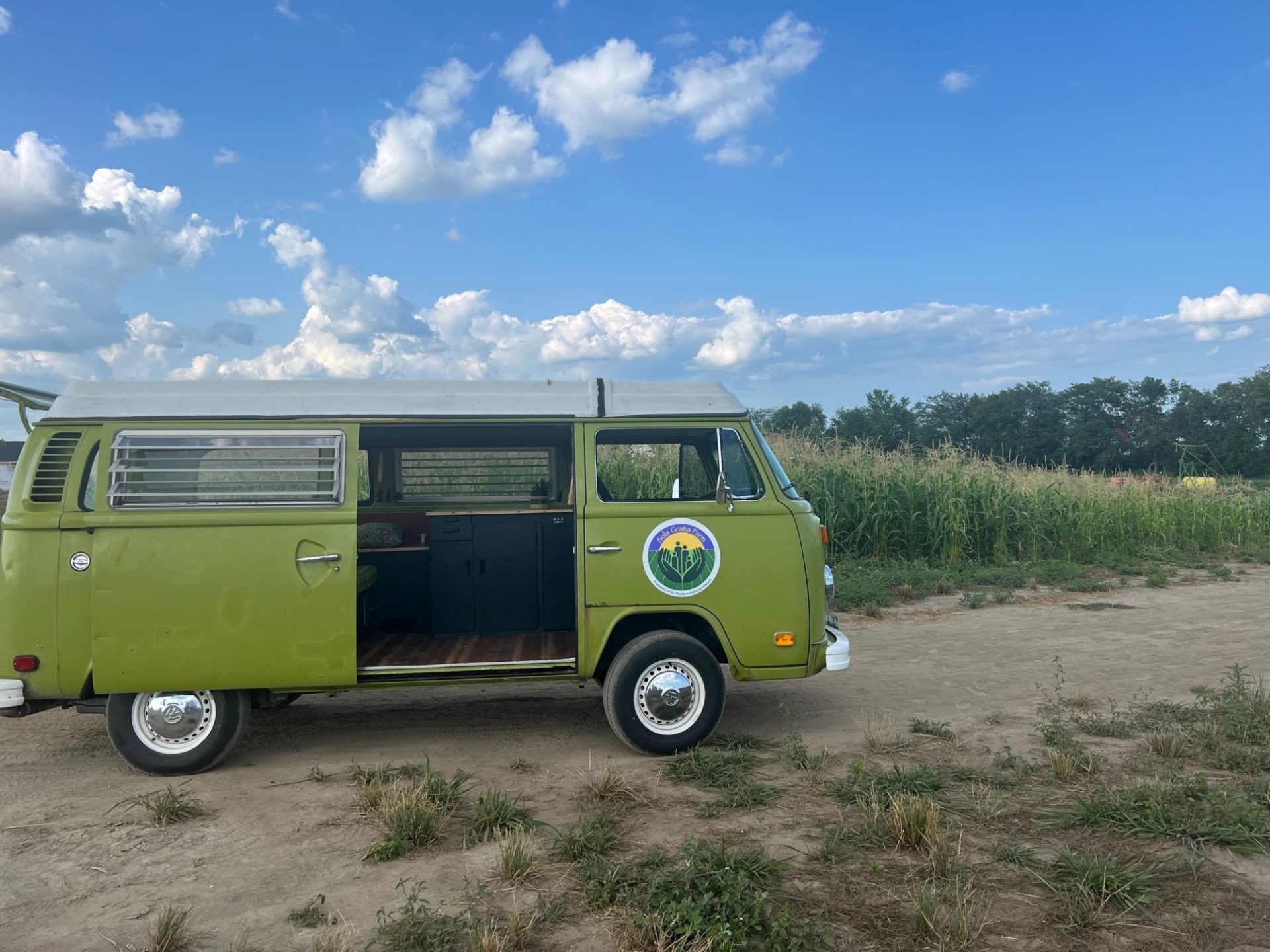Last month, I spent a sunny late afternoon ambling through the land newly acquired by Sola Gratia Farm, as part of the Urbana Amble garden tour.
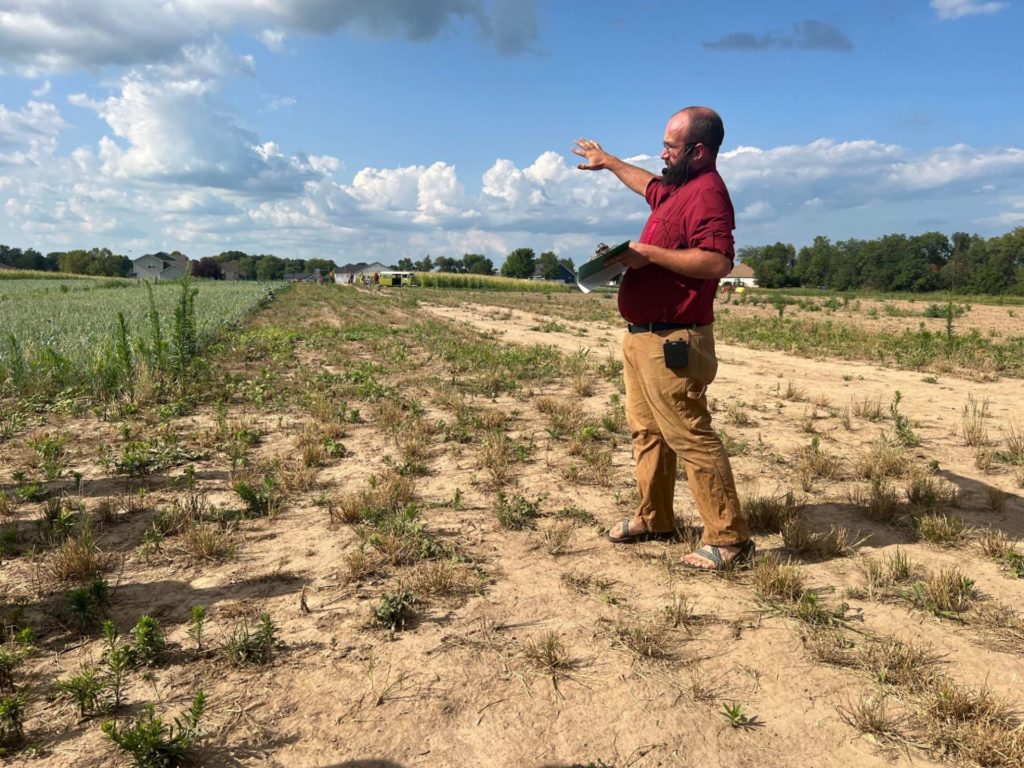
The 29 acre expanse of new land is tucked between subdivisions on the southeast side of Urbana, a short walk from their original four acre farm at St. Matthew’s Lutheran Church.
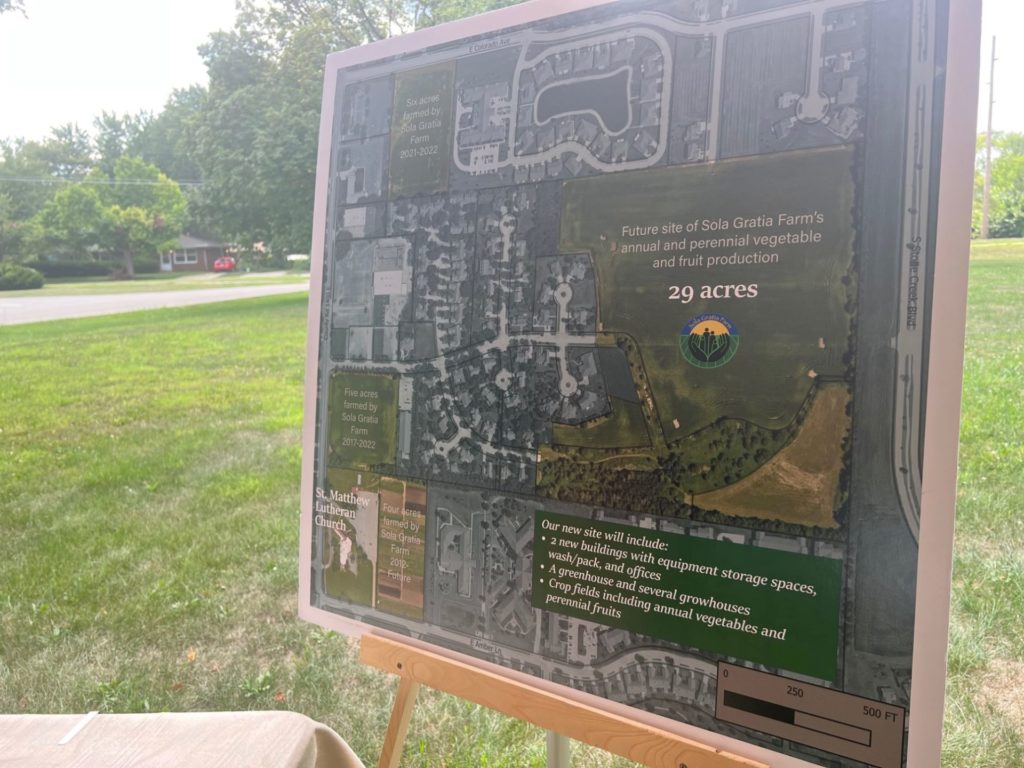
In their nearly 12 years of existence, the farm has grown from a small ministry of the church, to a robust community organization, all the while maintaining their founding tenets “to share our gifts with the hungry, be good stewards of the earth, and build a community of cooperation and care.” In simplest terms, they are loving their neighbors.
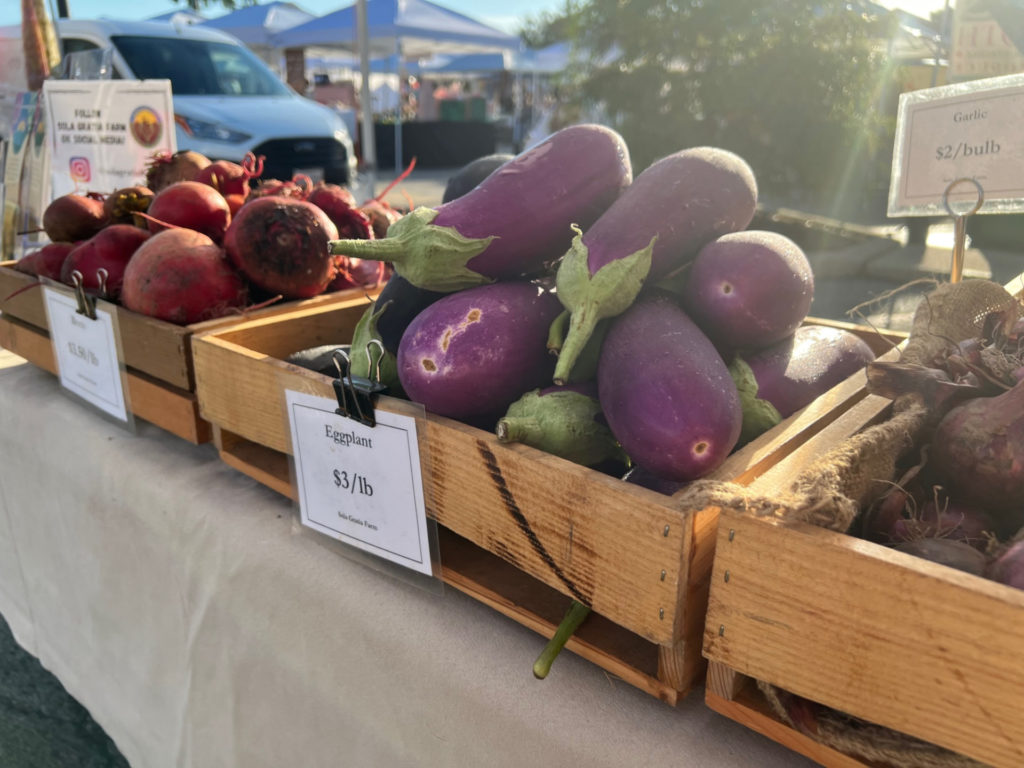
Many are likely familiar with their presence at Urbana’s Market at the Square and the Champaign Farmers Market, where they’ve been a fixture for several years. They also run a CSA program, which we regularly feature in our annual round ups. Those pieces are the engine that powers the true purpose of the farm, which is addressing food insecurity in our community by increasing access to healthy and affordable food.
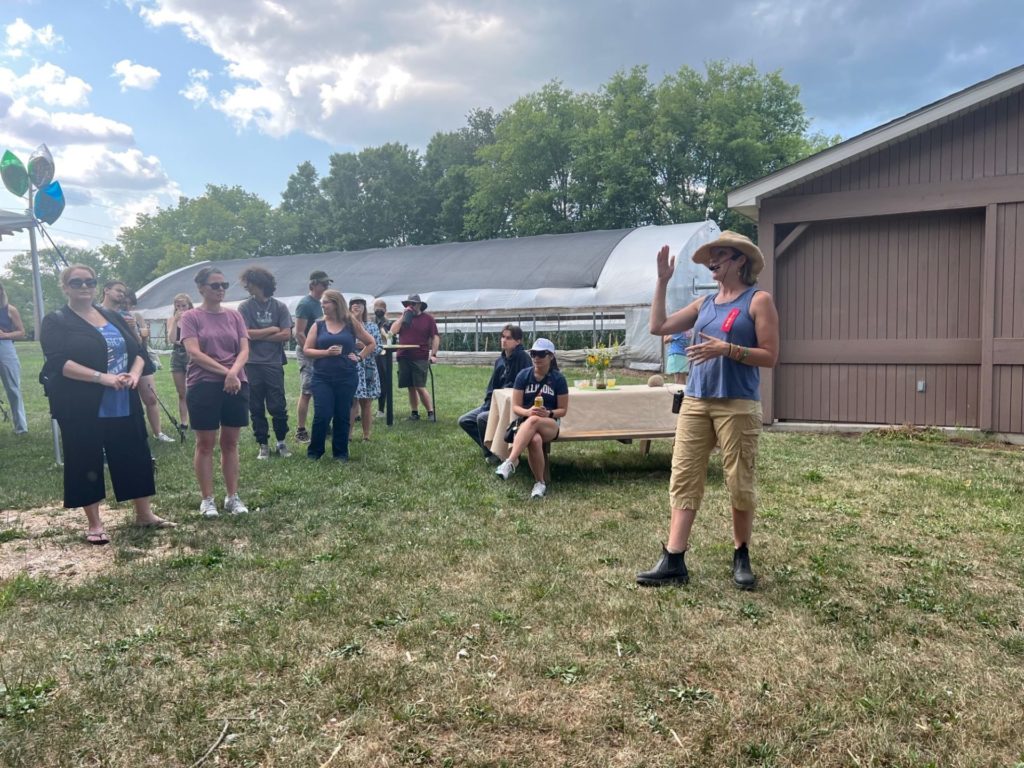
Prior to the Urbana Amble, I met Director Traci Barkley at the farm to chat about her role, the needs in our community, goals for the future of the farm, and why turnips are her favorite vegetable.
Interview has been edited for length and clarity.
Smile Politely: Let’s start by having you tell a little about yourself, and how you ended up here.
Traci Barkley: This is a second career for me. I went to school to get into ecology and clean water protection, and natural resource management. I spent 20 years working with the State of Illinois, and then the organization Prairie Rivers Network, to bridge science and policy and advocate for clean waters. I partnered a lot on advocacy work in Springfield with a group called Faith in Place. Brian Sauder, who is now the director but was a program officer at the time, used to have his office here at St. Matthew’s. He’d helped start this little farm initiative called Sola Gratia. I was incredibly inspired by what this church was doing, and at the same time, I admittedly was getting really cynical and disgruntled with environmental work.
SP: I imagine that sort of advocacy work can really burn you out.
Barkley: Twenty years of that, and doing community organizing with coalfield communities, and seeing the damage that had been done, and just how slow it is to make change. I was in meetings all the time, and doing office work, and it was far from the field and really being in touch with water resources and natural spaces. I grew up in a farming family, and my husband and I were starting to have some farm dreams… of what it would be like for us to start a farm. When we started talking about the real nuts and bolts of it, we realized we don’t know what we’re doing. So I started talking to Brian about this project, and they were looking to expand. They needed a new farm manager, and I thought maybe this was an opportunity for me to pivot, to get into growing clean food and still serve the community. The nonprofit world is where my heart is. I basically pitched — you have this four acre farm with an amazing mission, and an opportunity to grow your program, and I want to do that.
SP: So you sort of came up with your position.
Barkley: Truly! All the pieces were there, and they were doing amazing work as it was, but we know there’s a huge food insecurity problem in this community, even though we’re surrounded by some of the best farmland in the world, and I just felt like we could grow the farm, expand the offerings, develop educational programs, and reach more people in the long run. So that’s what I’ve been doing with an amazing team over the last ten years. We’re fully realizing the same mission the founders set 12 years ago.
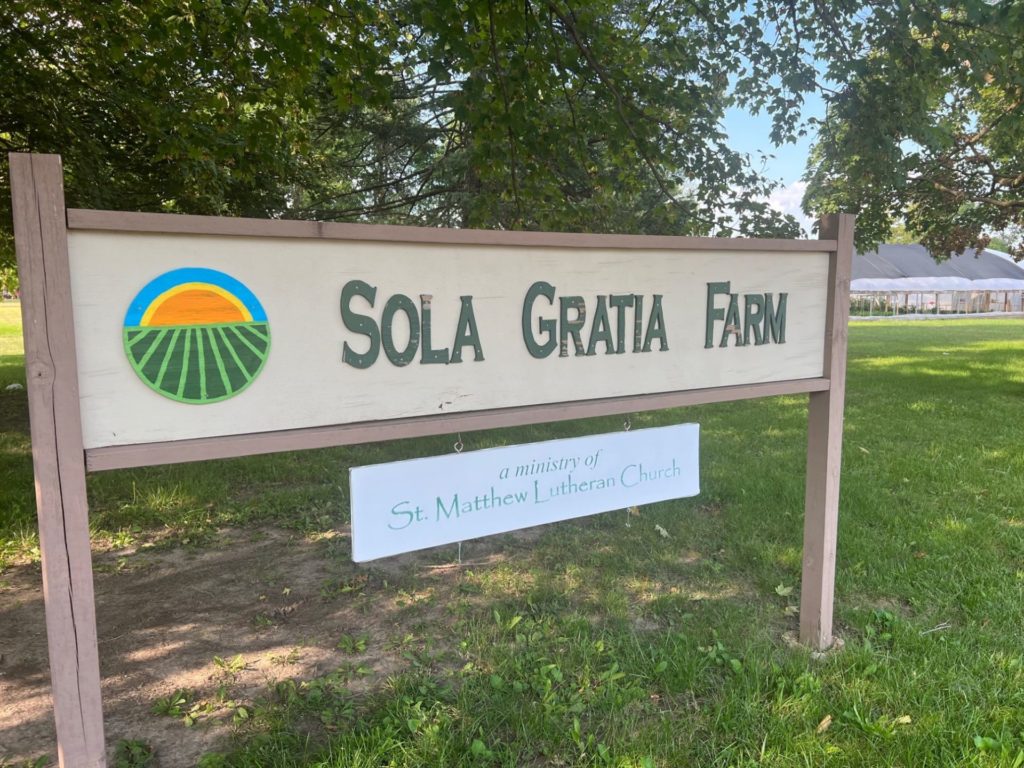
SP: I know you were in the initial stages of Sola Gratia, but can you speak about its origins, and why the church decided to embark on this specific sort of ministry?
Barkley: The church had a long history of addressing hunger. The original four acres was being farmed for corn and beans by a church member who was also a farmer. The proceeds from the sale of those grain crops were used to support a world hunger relief fund. Then Faith in Place started talking to church leadership about how much of a food insecurity problem we had here in our own community, and how could we pivot this land to grow real food for real people, and incorporate more people into the solution. It was really kind of a one person operation, and it really wasn’t food to help our neighbors in need. To St. Matt’s credit, they’ve been working on this for a long time. It was a huge undertaking. It’s easy to ask a farmer to come in a couple times a year to plant and harvest, but to then hire a farm manager to develop a specialty crop plan with all the variables you can’t control… it was a bold mission. It took money and a lot of grit.
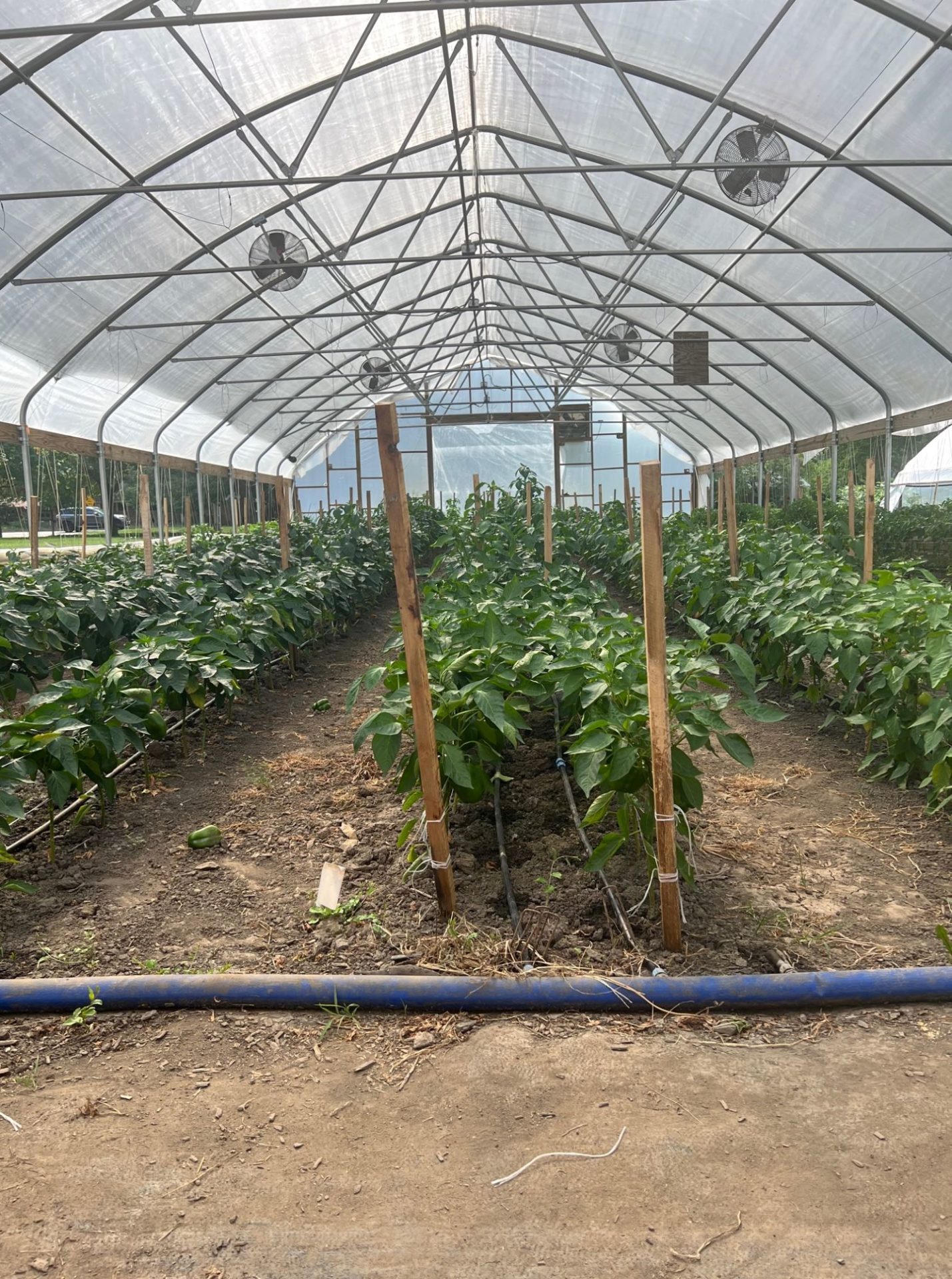
They built a greenhouse and put in the infrastructure, and they were harvesting and washing vegetables, and aside from one staff member it was all the congregation and volunteers. They started the CSA with 80 members, largely church members, and that’s a lot of people management. It was a lot of sweat equity and heart equity.
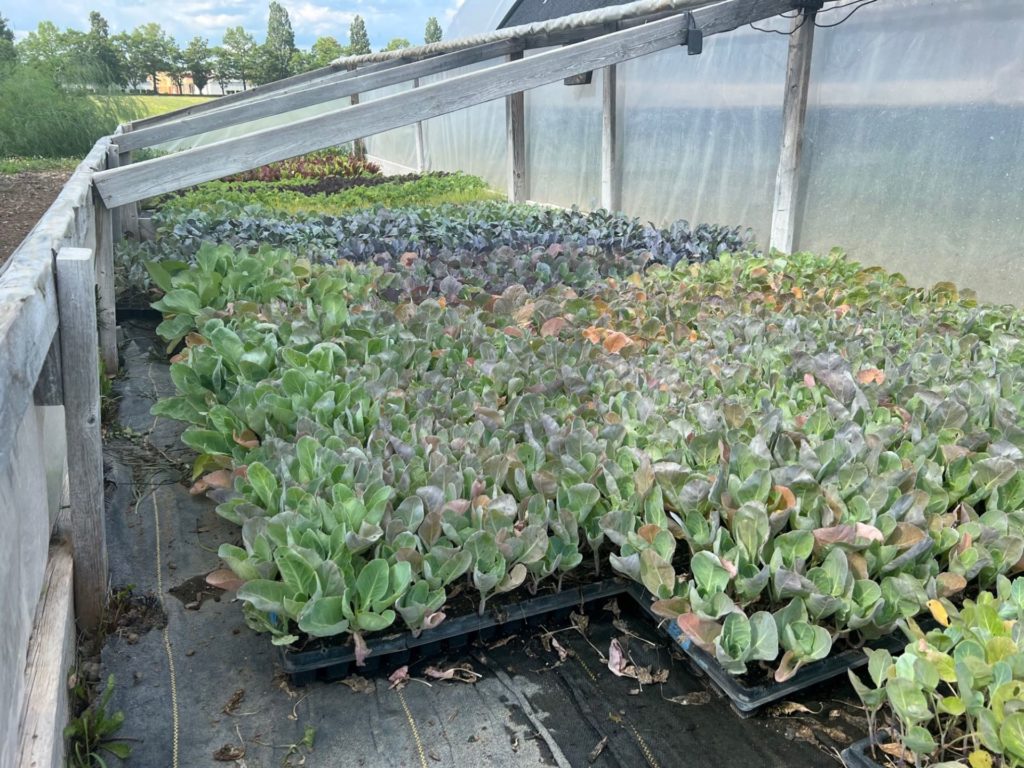
SP: How has it shifted from one staff member and a bunch of volunteers? What does it take to operate what you have going on now?
Barkley: It’s a whole different animal! When I came on it was in the third year, and I was the second employee. I was working in the field and starting to develop a newsletter, showing up at the market, and developing some more outward facing pieces. We brought on a couple of farmhands and we grew our volunteer program. Now, we have three year-round salaried staff, another six year-round hourly staff, and 12 seasonal part-time employees. We’ve been able to shift from a nine month operation to producing food 12 months out of the year. About half of our staff is going to be able to work pretty much full time year round, which is huge. It’s a really difficult thing for a seasonal operation to invest so much in staff, then have nothing for the winter time and say “I hope you’ll come back!” A lot of people who work here want to stay here. It’s something they’re committed to.
SP: So how is the work you are doing at the farm connected to the community? Who are you serving beyond the customers who purchase food through the CSA or at the market?
Barkley: The whole point of our farm is to address food insecurity. The model is possible because we have 200 CSA members, and we are at two farmers markets, and we sell to Common Ground Food Co-Op and some wholesale clients. We do all of that to enable us to give at least ten percent — but we’re between 20 and 30 percent every year — of our harvest to people that are food insecure. We know that vegetables are an important part of a healthy diet, and there are a lot of people in our community that have limited food dollars.
SP: And it’s expensive to buy fresh vegetables.
Barkley: It’s expensive, they’re perishable, it takes preparation, you have to have some kitchen skills, you have to have a kitchen. We know that if you have limited food dollars you’re not likely to spend it on vegetables. You should get to eat good food regardless of your socioeconomic status.
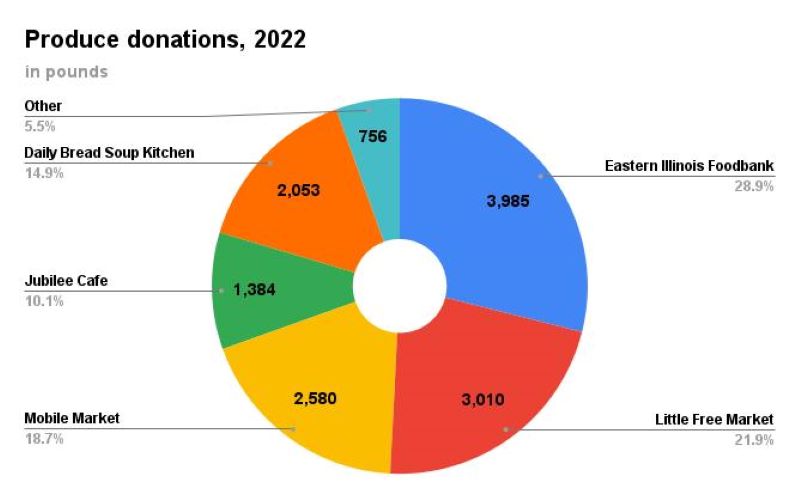
We’ve partnered strategically with a number of groups in our area. In the beginning, our partner was Eastern Illinois Foodbank, and they have facilitated a lot for us, and still do. But depending on what crops are coming out the field, and what their condition is, some things are ripe and need to be eaten and cooked. So to send them through the foodbank, which has multiple links in the chain, doesn’t make sense. On Mondays, Community United Church of Christ has Jubilee Cafe, and we’re sending what is enjoyed [by the guests], and can be cooked, and can hold up. We also partner with the Carle Mobile Market, giving free vegetables out. On Tuesday, unsold produce from the Champaign Farmers Market is going to the Daily Bread Soup Kitchen. Wednesdays the foodbank comes, and we’re loading up hundreds of pounds of produce like summer squash, cucumbers, eggplant, peppers, and greens. Also on Wednesdays is Wesley Food Pantry. Friday we run the Free Friday Market at 1101 East Colorado [Urbana] in front of Cornerstone Fellowship, partnering with C-U Public Health. This is our opportunity to serve our neighbors. We know there are people struggling literally right across the street. We give out a couple hundred pounds of fresh vegetables, hygiene supplies, dry goods, masks, and they are letting people know about their free health clinics and WIC program. Most recently we’ve partnered with Red Herring to create Handmade Harvests. Those are meals prepared with vegetables from Sola Gratia and Solidarity Gardens. They’re distributing those at our Friday market.
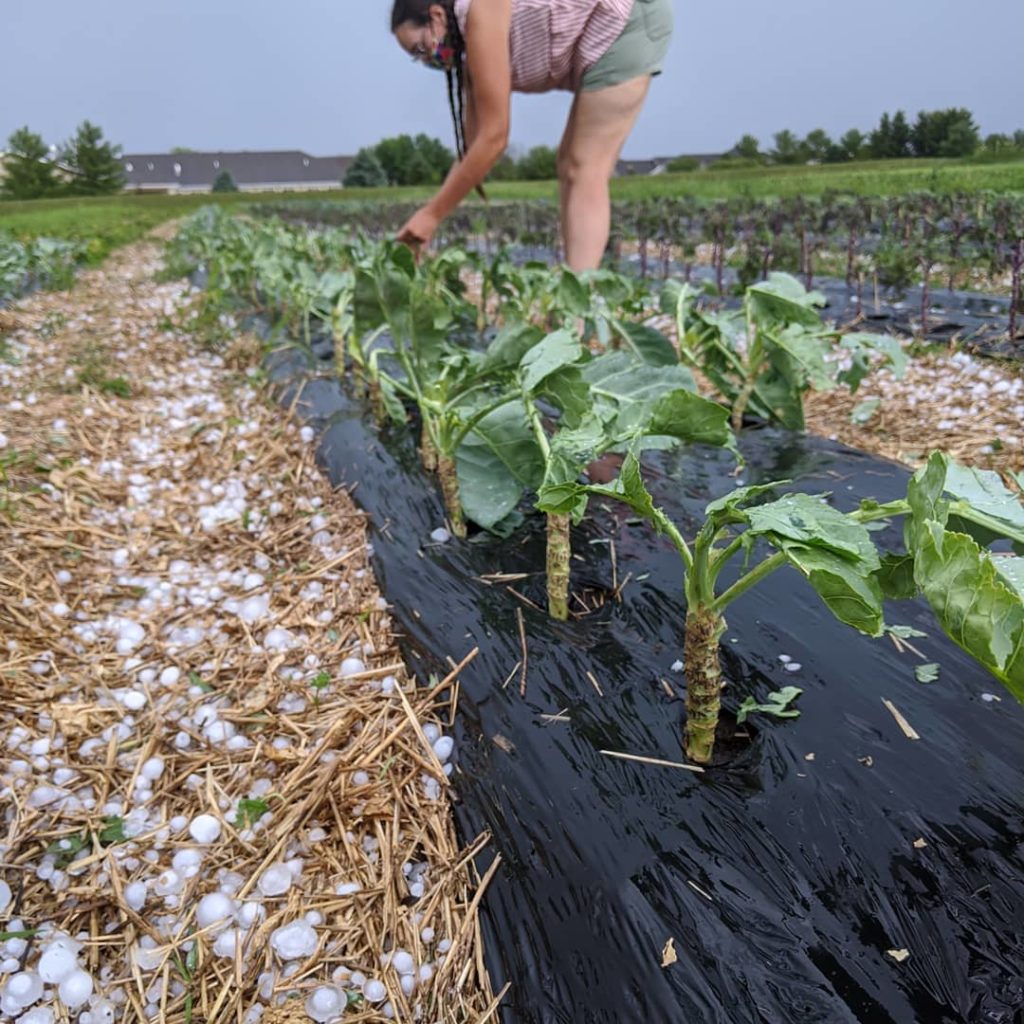
SP: How have you seen the impacts of climate change affect your work? It feels like it’s really been in our faces this year, especially.
Barkley: I think the last three years. In 2020, we had a late frost in May, so we lost some initial plantings. In June we had flash floods. Mid-July we had the hailstorm and lost 70 percent of our crops. In August we had a derecho — I learned that term for the first time. In October we had an early freeze. Last year we had a severe extended drought, this year we’ve had a severe extended drought, and we have some new pests. With following organic practices, and more importantly regenerative practices, we spend a lot of time building our soil and designing the farm to be resilient as conditions change. There are definitely short term gains from some of those practices, but the point is long term investment… the expansion allows for us to build a farm that is more resilient, because the climate change piece is something we’re going to just have to continue to adapt to.
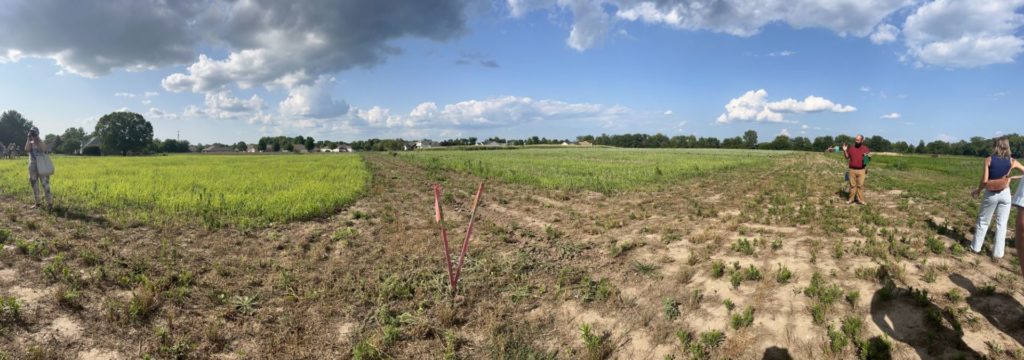
SP: So where is the new land?
Barkley: [Gesturing] Right on the other side of that tree line! We have seven acres of wooded and 22 acres of tillable [land]. We’re farming all of our annuals there now. We’ve harvested a lot already. The plan is to alley crop, so we’ll be planting perennial crops in rows with the annual vegetable crops. We’ll be planting apples, and pears, and cherries, and currants, and persimmons, also nuts, so we’ll have a protein source on site.
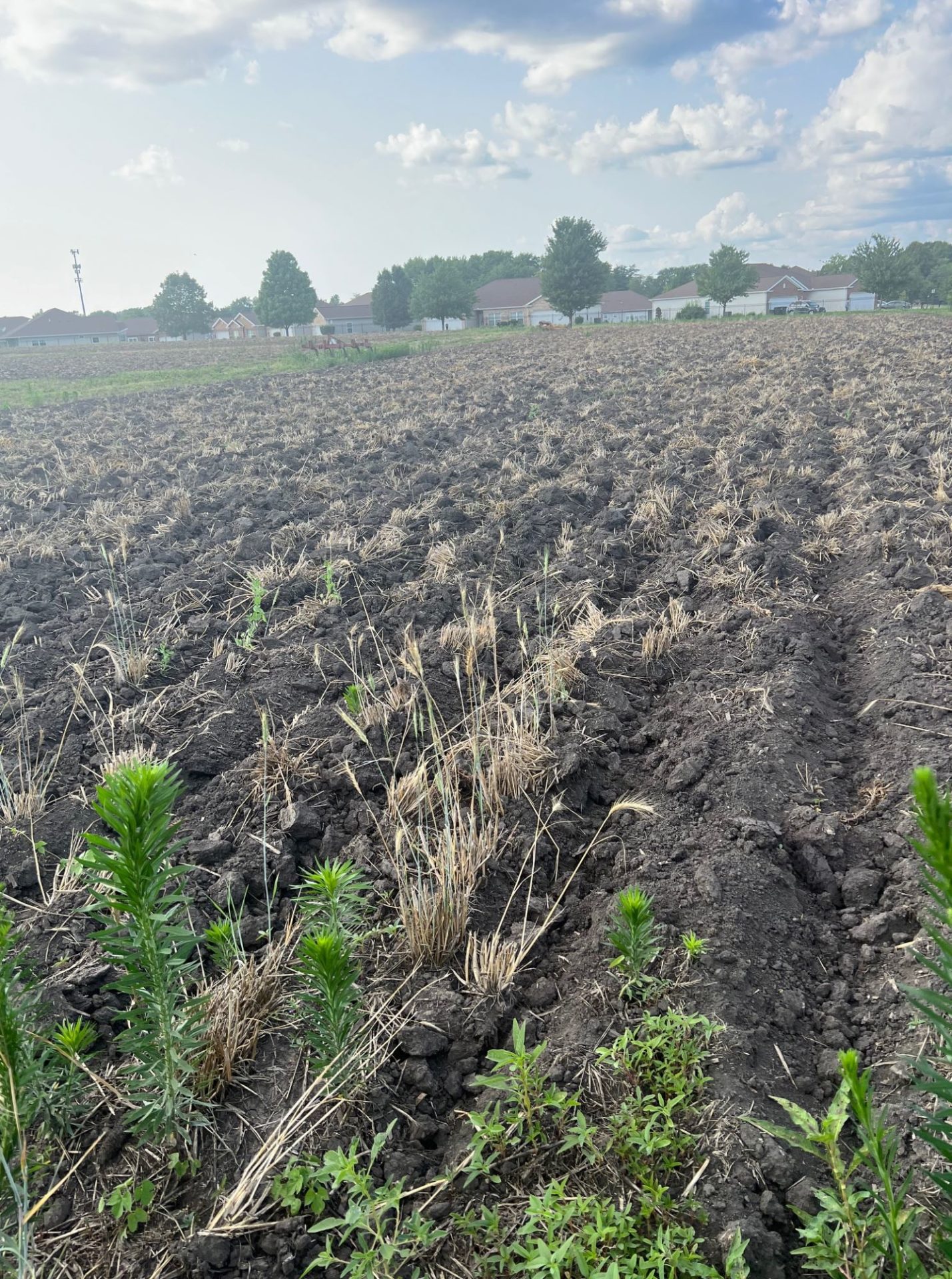
SP: Do you have a big, audacious goal of what you want to come from this expansion?
Barkley: I think what we’ll be accomplishing is the ability to say that we’re a staple provider of good healthy fresh food for everyone in our community, but especially those with limited food dollars. We will be using the new expanded site as a demonstration site for organic and regenerative practices. It’ll be a teaching opportunity for other farmers that are looking to shift from conventional farming practices, and also inspire the next generation of farmers to invest in small scale specialty crop regenerative practices.
The third piece is that our original four acres on St. Matt’s land will be an outreach education demonstration farm. We’ll design it specifically for education, with permanent walking paths and signage, where we can talk about things like cover crops, and beneficial insects, and native growing practices. We’ll use it more as a passive learning opportunity, a park-like setting for groups to come and visit. It’s also an opportunity for us to talk about food insecurity. I think a lot of people have no idea how many people are struggling. That ability to connect, and become more empathetic, and serve each other — we have to keep talking about that.
SP: For you, what is the most challenging part of the work?
Barkley: That it really matters.
SP: Do you have this feeling that if you drop the ball…
Barkley: Yes. COVID was so hard for all the obvious reasons. Everyone knew the work that we did mattered, and that people were counting on us, but it was very scary in the moment. We all had to stay healthy, to keep doing this work, because even more people were depending on us. The work is never done, and you are looking at the people that you are serving in the face, and making promises. There are a lot of things we can’t control. It’s part of what I love about this work — it’s very dynamic and there’s a lot of creativity and opportunity for problem solving. It’s kind of like Iron Chef every day.
SP: Is there a specific moment you can point to where you thought, “Yes, this is why I do it?”
Barkley: Aside from the markets, we are the producers, not the distributors. But when we do have the opportunity — like the Free Friday Market or serving folks at the farmers market who are using LINK or WIC — it’s rewarding for us to hear that they are enjoying fresh food. Or when I hear people at the plant sale, and they talk about “my mom used to have this…”, or “my grandma used to.” How food ties us together with family and friends, and ultimately nourishes not only our bodies, but those connections. That’s hugely rewarding.
SP: I noticed on the Sola Gratia website that your favorite vegetable is turnips. (Author’s note: I am skeptical about turnips.) Can you tell me about that?
Barkley: I don’t know what it is about turnips, but I crave them.
SP: How do you prepare them?
Barkley: My favorite are the salad turnips because they’re super juicy, and don’t need to be peeled. If I ever work a market or CSA distribution, and we have turnips left over, I’ll take a whole bunch and that will be my own private meal and I will eat a whole plate of just turnips. So here’s what I do: Cast iron pan, butter, garlic. Depending on the size I either half or quarter them, and I sauté them until they get kind of soft and start browning, and then I put lots of fresh cracked pepper on them.
SP: Okay. I can do that.
If you’d like to give to Sola Gratia’s Help Us Grow campaign, which will directly support their expansion, you can do at their website. You can also support the farm by attending their upcoming Salsa! Salsa! event, where you can learn Salsa dancing and enjoy some tamales and farm fresh salsa.








